-
Posts
381 -
Joined
-
Last visited
Content Type
Forums
Profiles
Gallery
Blogs
Downloads
Events
Posts posted by magellan
-
-
I'm glad I caught this thread. I'll have to do something like this. I dropped a jack handle right on the front of my fender yesterday and broke off a 4 cm chunk (whoa... :biggrin: I consider myself lucky, although I thought I was nowhere within range of the bike). I was considering whether or not to cut it back or try to repair it. Thanks to you I have the confidence that cutting it will work. I'll post up pics when done.
-
Don't you need a gullwing triple(like the 929/954) to keep the stock geometry?
Looks good otherwise!
The 6th gen doesn't have a gullwing top triple. A lot of guys use a gullwing top so they can mount clip-ons above the clamp with shorter-than-stock forks, but that's not an issue with bars and risers. If anyone doing an RC51 conversion wants a version of Tim's triple with gullwings and without holes for the handlebar risers, it's a reasonably easy change in CAD.
-
He told me that your average solar panel takes up to 9 times the energy to produce that it actually returns during its lifetime. They are horrendously inefficient at the moment, but improving slowly as pressure comes on to find alternatives to fossil fuel derived energy sources.
Your son got hold of old and severely exaggerated information. From Wikipedia, citing this source: :fing02:
Solar cells and energy payback
In the 1990s, when silicon cells were twice as thick, efficiencies were 30% lower than today and lifetimes were shorter, it may well have cost more energy to make a cell than it could generate in a lifetime. In the meantime, the technology has progressed significantly, and the energy payback time of a modern photovoltaic module is typically from 1 to 4 years depending on the type and where it is used (see net energy gain). With a typical lifetime of 20 to 30 years, this means that modern solar cells are net energy producers, i.e they generate much more energy over their lifetime than the energy expended in producing them.
Photovoltaics are great and only getting better.
I will now hold my breath for one minute.

-
Not to mention, knowing the nature of this country, what do you think is going to quadruple(or more) in price once we -as a whole nation- decide to switch to E-vehicles instead of gas? That's right, electricity. Leave it to a few greedy people to ruin a good thing for millions.
Sorry to sound pessimistic, but please try to convince me otherwise.
That is certainly a possibility in the foreseeable future, but not for a good while, and only if we let it happen.
In fact, now is the time to get in on all of the rebates and incentives that make the cost of a solar electricity and water heating installation (or windmill if you have the wind and available land) worthwhile. With a large array you have all the power you need for your home and sell the excess back to the grid. California has an initiative to put solar panels on every rooftop, though Germany (yes, cloudy Germany) currently leads the world in solar infrastructure. Clean power is already available. We just have to go get it.
Here in Washington State, many landowners are installing windmills, and there are vast areas of the state with such constant wind that the windmills pay for themselves within a few years and then make the owner money forever after. I don't have that kind of land, but it would be pretty cool...
The problem with the grid to date is that inconsistently generated energy from tides and wind has nowhere to go. One of the big pushes is to develop efficient battery installations to accept the incoming current and store it so the power can be metered out at a controlled rate. Already, testing of multiple solutions is meeting with great success, which will encourage use of even more wind, solar, tidal, geothermal, and
energy. All we need is the public will to encourage diverse sources of clean generation. Unfortunately, other countries are already way ahead of us.Convinced yet?
-
just be a remote polluter.
I've heard this argument repeated too many times, and it's imperative that people realize how short-sighted it is. Coal-fired power plants need to be replaced with renewable sources. The U.S. power grid needs an overhaul. Storage of DC electricity (generated by wind and solar) at sub-stations within the grid needs to become widespread. The technology is already here, but the political will is lacking.
Think of it this way: Sucking the last drop of petrol from the ground so we can continue to pollute with 50 million cars is much less palatable than moving pollution production to a single site while we work out how to clean up the power plant.
I imagine a mixed solution. EVs for commuting/city use, and plug-in hybrids for long trips. Urban air pollution would plummet to a tiny fraction of what it is now while eventually even our power plants become non-polluting.
-
Just a question on your install as I am looking to do this on my 4 gen. Have you had any hits to the muffler/tire with 2 up riding (or alone). I also have a CF hugger on mine so Im worried about that and thinking of using a tail riser for more clearance. Also curious if nay related heat problems with the undertray / seat or rear lenes. Thanks Brian
Oops, sorry for the delay. I got no notification of your post. Before I raised my rear suspension a bit I did hit the bottom of the pipe with the top of the rear tire. Since this thread was posted I've re-designed the system with a completely new undertray for more clearance. Now I never hit, even two-up with panniers and top box loaded.
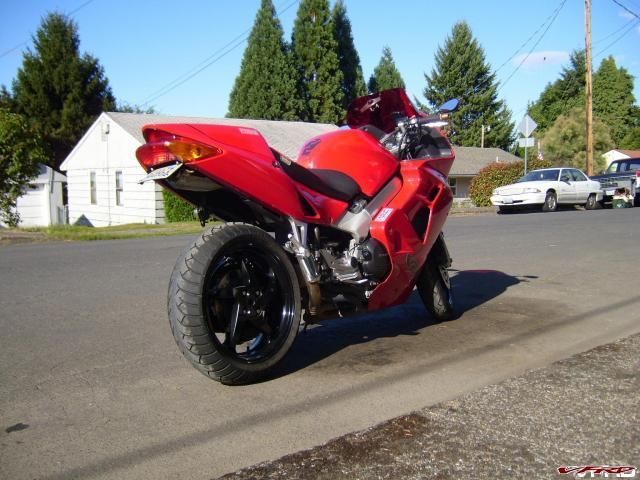
S7000360.JPG
You can see here that I no longer have much room under the seat...
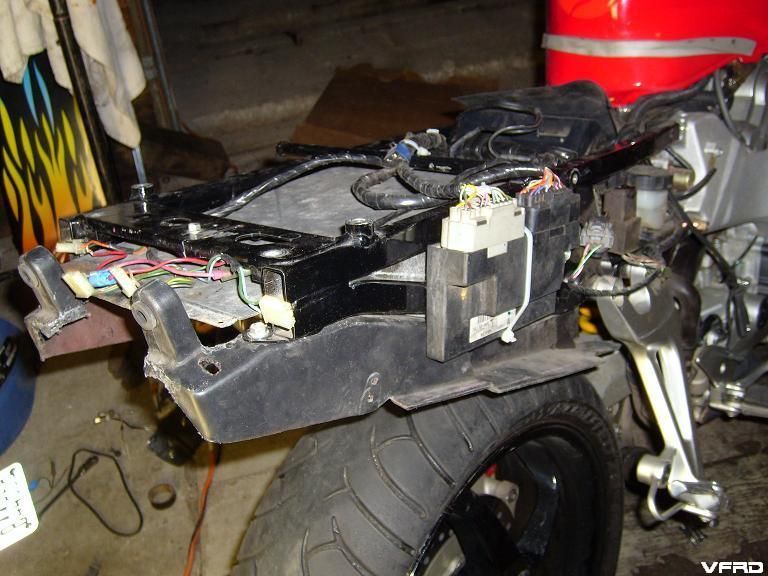
2011_0629_065627AA1.JPG
...but I have lots of storage space!
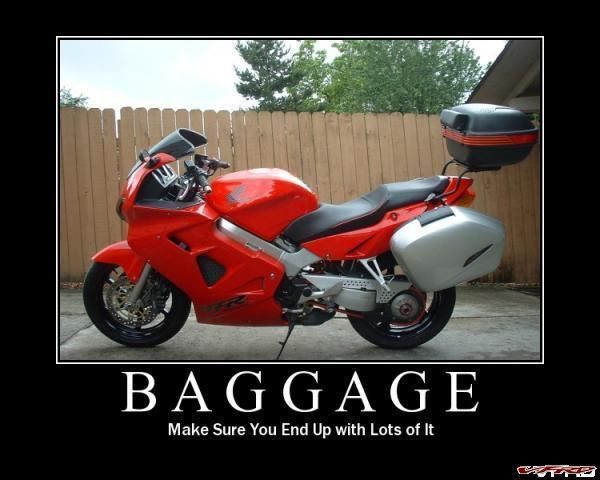
Baggage.jpg
-
We've made some great progress. Travis gave me permission to update the thread, so I'll post up a link to his pics and the link to his site in addition to the pics posted here.
It's no small task to find a motor of sufficient output that fits between the frame rails, clears the swingarm once sprockets and chain are in place, and mounts to the existing frame with little modification. The strange thing here is that the '86 frame seems custom-made to accept this motor. All we had to do was grab some 3/8" aluminum plate and cut it to fit the available space, then mount it up with bushings to minimize resonance from the chain-drive through the main frame.
Early plate fab:
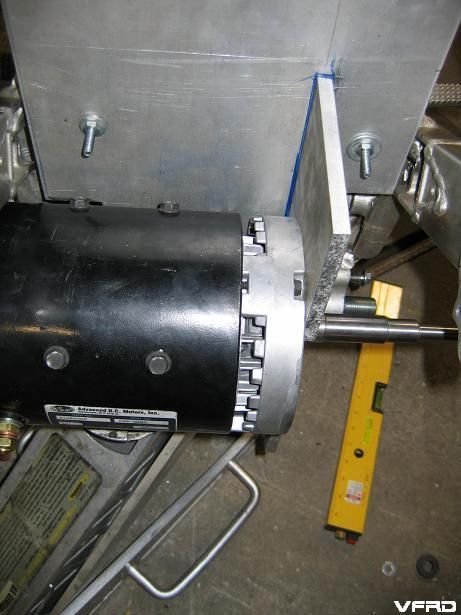
Rough Layout.jpg
Then we removed excess material and cleaned up the edges. The motor face plate is attached to the back plate with seven stainless hex-drive bolts, so it won't be going anywhere!
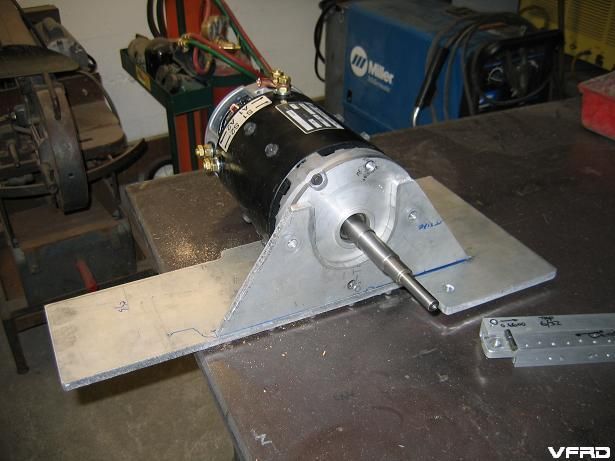
Mounting Plates Done.jpg
Plenty of clearance top and bottom of the swingarm:
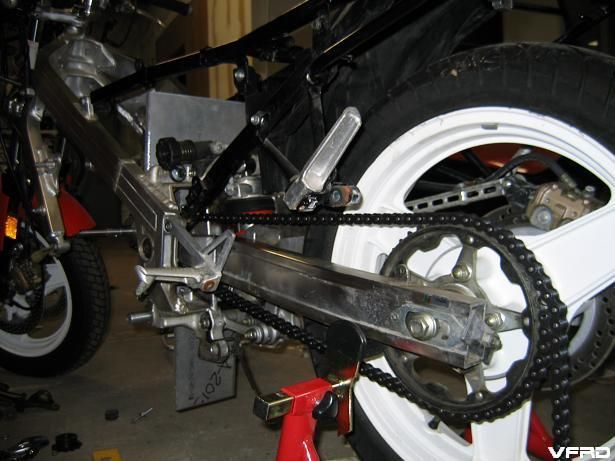
Swingarm Clearance.jpg
Mounted up:
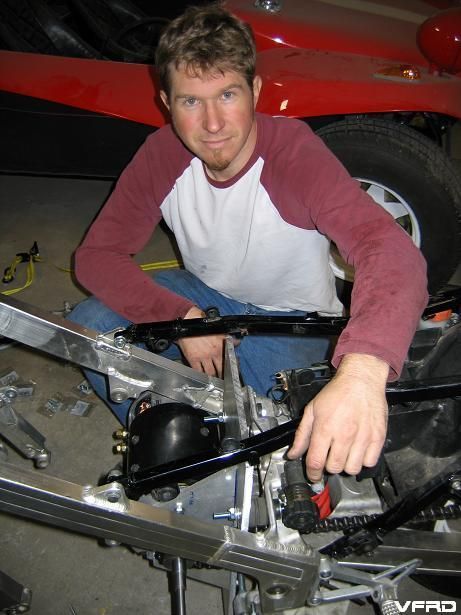
Motor in the Bike.jpg
And Travis with his dream bike...
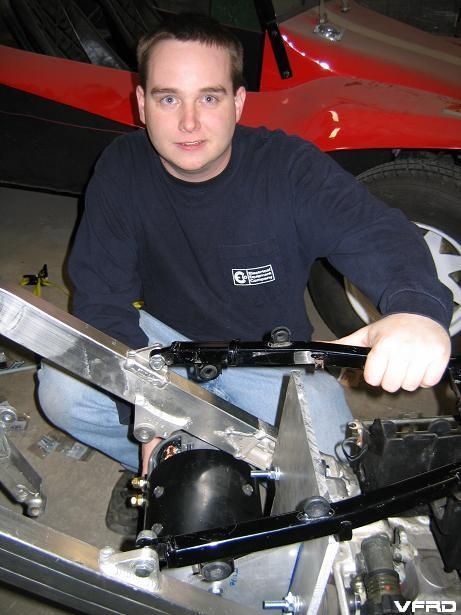
Proud Owner.jpg
Next week we'll get the battery trays installed, and within another week of that we'll be road testing!
-
Ever since having Lasik surgery on both eyes blue light at night is annoying. It's like my eyes don't want to focus and I have to force them to. Weird but true. So this mod is likely out for me. Pretty cool though...
-
Blue front fender ?
Might actually be overkill on the blue. The bike was already a beautiful pearlescent color (doesn't show in pics), so the blue is really supposed to be an accent.
Signals will be GSXR mirror/sigs very soon.
-
Well, George let me act as his photog today, so here are pics of the final results. I love it. Pics don't do the color scheme justice.
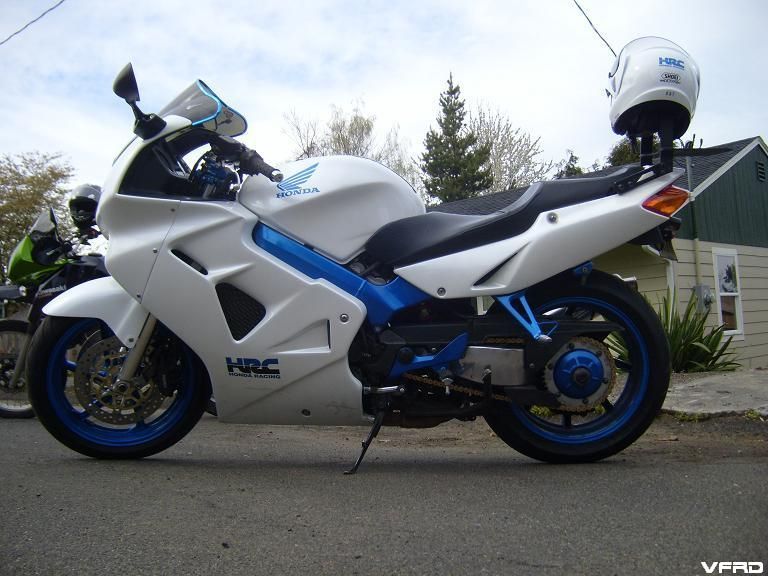
S7000677s.JPG
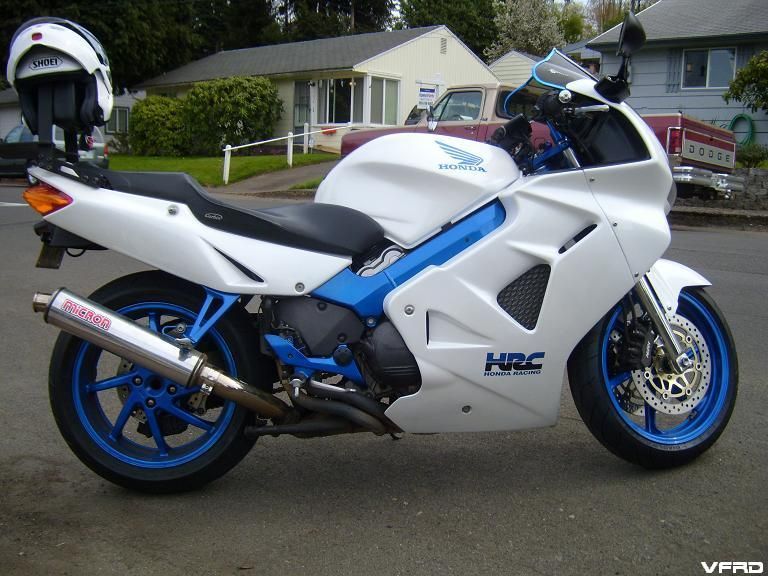
S7000681s.JPG
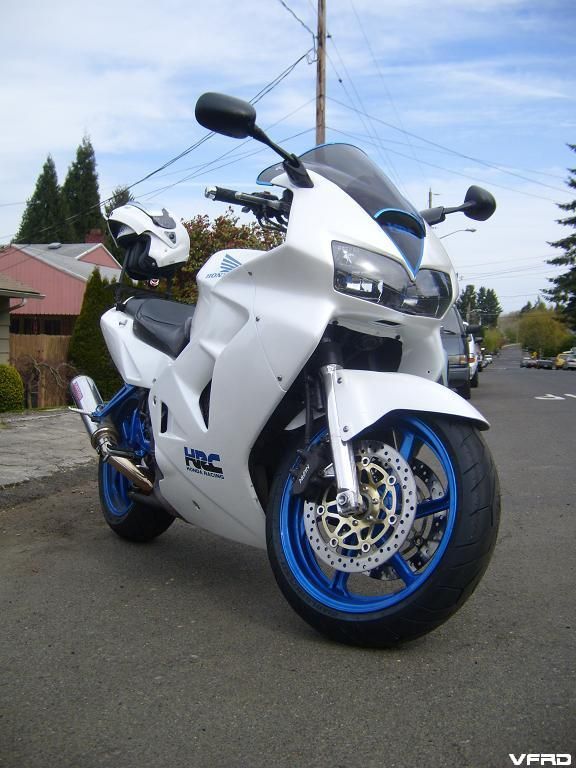
S7000679s.JPG
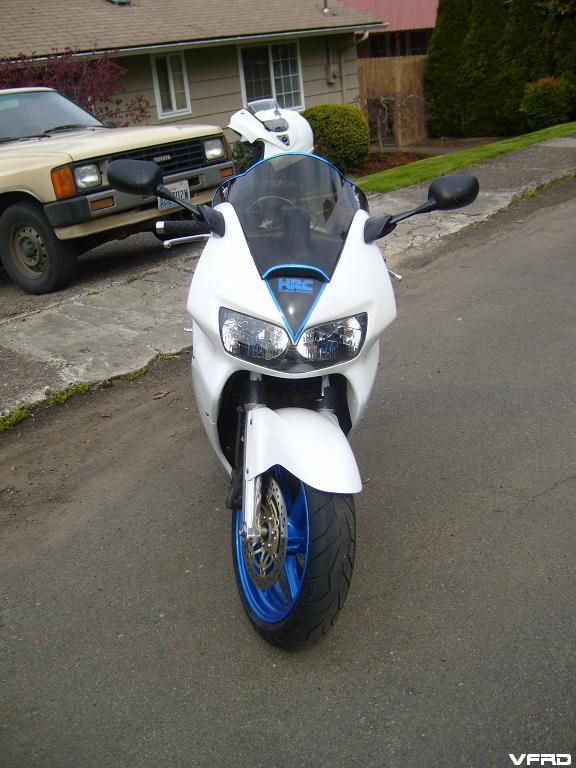
S7000680s.JPG
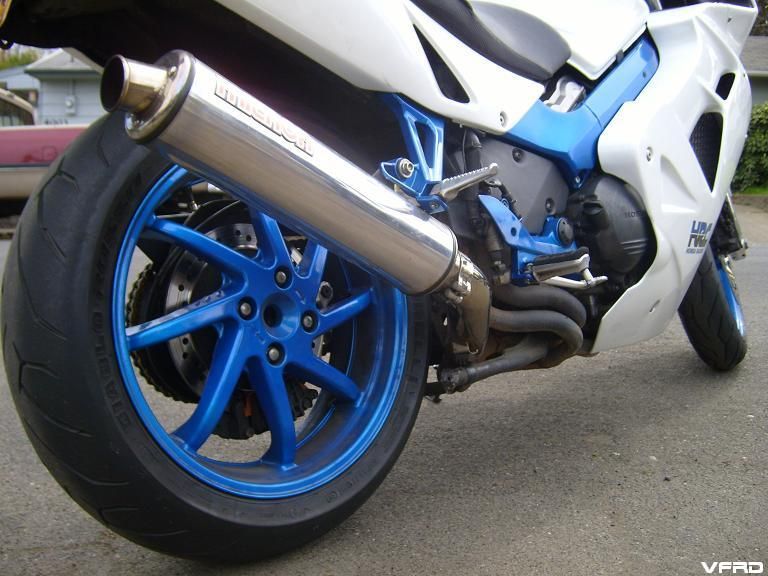
S7000682s.JPG
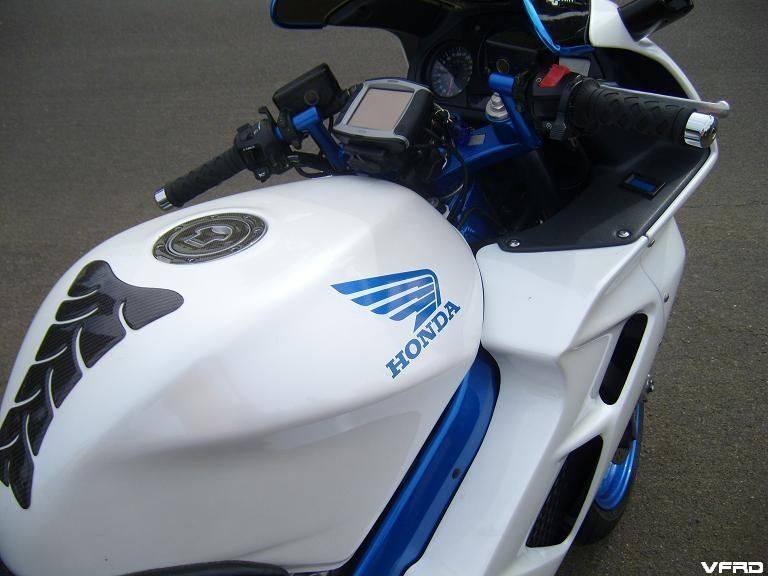
S7000683s.JPG
-
It's all done now, and it looks completely amazing in person. I won't steal George's thunder, though. Hurry up and post some pics, man!!
-
Haha, George, you just couldn't wait to show it off could ya?!

It'll all be back together on Saturday, and it looks even better in person. Everything blue is powder coated.
-
all the parts are off the shelf, controller, batteries, contactor, DC-DC converter, cable, gauges...
If only someone would sell us a hundred complete bikes sans engine and fuel systems, we could build these all day long. Electric Motorsport did until Piaggio stopped selling Derbi MCs in North America. There's a lot of room for improvement over what these guys have been selling, though. For example, the motor Travis is using would stomp the one in the Electric GPR sold by Electric Motorsport.
-
I went downtown today, we'll start mocking up some motormounts for the new DC motor. I'll at least have 4 of the batteries hooked up to stroll around the parking lot within the next few weeks if all the parts get ordered and shipped on time.
I'll try not to step on Travis' toes here. This project is all his, but I met him down at the shop last night and checked out the bike. It looks like I get to come down and 'hand him wrenches' while he mocks up packaging and builds brackets and racks for the motor, batteries, controller, and charger. He even has an idea for a generator in one "saddlebag" and fuel in another for a range-extending hybrid. The cool thing is that much of the technology is out there already. It just needs to be put together. Vectrix is getting close with this.
Give the industry 5 more years and you'll see a bike with some sort of electric drive that we'd all enjoy riding.
-
More power to you. I live in Portland too and own a 1994 US Electricar Prism. I've thought a great deal about electric drive for motorcycles. I even bought a Honda Elite scooter to convert before I bought the car. There are definitely great things to come with electric vehicles. If I had a clean sheet of paper for a motorcycle design I'd be going diesel-electric hybrid with the diesel serving solely as a generator. Think of the range!
There are so many engineers here at VFRD I would think your project should generate at least some excitement. Definitely limited in range though, so I'm sure you won't stray much beyond city limits. Why not go with L-Ion?
BTW, for those who believe vehicle emissions are are insignificant contributors to global warming, I suppose it's your right to deliberately mislead yourself, but please read this before commenting here.
EDIT: Just checked out your site. Should have known you were working with Synkromotive :thumbsup:
-
Sure sounds good to me. Anyone see a better deal than this on the single-speaker unit?
In the review article they mentioned a forthcoming two-speaker model, but I don't see any evidence that it exists yet. Anyone find one?
There is a difference between the open-face and full face versions. The full face version has a small mic that goes in with velcro. The open-face version has a boom mic. The open-face version is much more readily available and cheaper, so if you don't mind the boom in your full-face helmet, it looks like Amazon has the best price.
-
This just arrived from china:
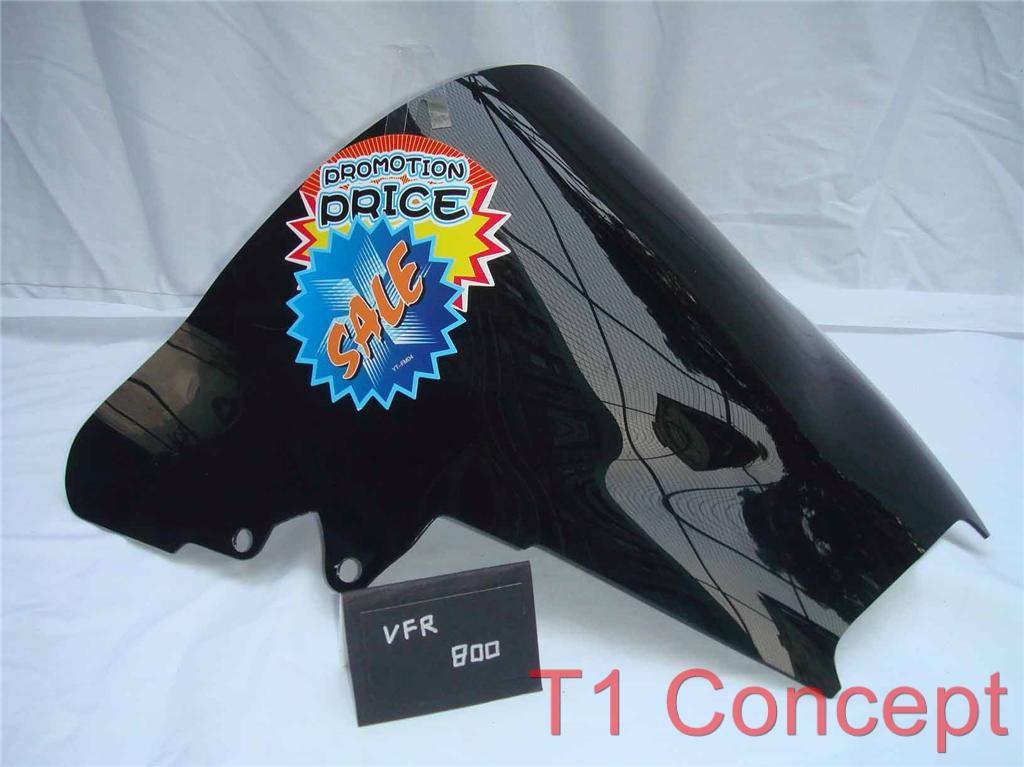
http://cgi.ebay.com/ebaymotors/ws/eBayISAP...688706&rd=1
it was 24.50 shipped, I wi8ll snap a picture when it is on the bike and we will se about fitment. The item looks really good off the bike, so well will have to see.......
Is that pitch black or 5%?
-
Clearly they were inspired by the cyclopian headlight and Monsters, Inc. I think it's hilarious.
I'll bet little kids constantly ignore every other bike in the crowd and shoot straight for this one. "Can I hug your bike, Mister?" :lol:
-
I rode from Portland to Pueblo, Co last year... in March...through an unforecasted freak blizzard!
I'll be flying in this month for a week to ski at Monarch (one ride through a blizzard is enough for a lifetime), so I was undecided about coming back in '08 until you showed the ride route through Lake City, the most beautiful, rugged, unforgettable area of the continental U.S. bar none.
I can stay with family and the wife will come along. Count us in.
-
Man, I read the thread title and got all excited about new forum moderators. Imagine my terrible disappointment... :P
-
fake Old Navy underarmor
sweatpants
fleece balaclava
Rev It pants with liner in
Tourmaster Cortech with liner in
Powerlet Proform heated gloves
Gerbing socks with top elements only
still need overgloves and rain booties
I just bought the heated gloves and a dual temp controller from Powerlet at the Seattle MC Show, then meandered over to the Gerbing booth to buy socks (since Powerlet doesn't make 'em yet), where I learned that I had saved $30 by getting the dual controller from Powerlet. Sweet.
My legs and core never get too cold as long as I layer up properly, but hands and feet were bitterly cold last March riding in a Colorado sleet storm, even with the "water-proof" boots and gloves I had then. HA! They didn't let any water escape... <_<
-

Hot damn. Minus the mudflap and with trick turn signals of some sort, that would be the nicest VF750F I've ever seen.
-
Dudes, where the CF can (with a slight increase in the height at which the can sits)? I'd do it myself, but I'm a Photochop novice.
-
What with all this wasting of time?? Where's my Okie1 taillight kit? :goofy:
:P
Actually I think it sounds awesome, but it needs the slash-cut tip. I also understand the argument against anything that threatens our sport. It would be a bit loud for my bike, but you wouldn't piss me off if I was behind you. My underseat system is a bored-out 6th gen can with some baffling left in place, and it's amazing how reasonable the noise level is. You'd also be stunned at how light my system is compared to stock or my old Staintune.
S7000360.JPG
I'm sure there are other ways to get the shorty GP-style look, but I doubt they'd be as inexpensive as what you've done and they'd probably be just as loud.



Vfr Triple Clamp Project
in Modifications
Posted
True. If you want enough fork to stick through the top triple that you can mount clip-ons above the triple, you need a gullwing. RC51 forks will mount without a gullwing; you just won't have much of anything to clamp to above the triple. In Tim's case, no problemo since he's using risers with a handlebar. :blink: